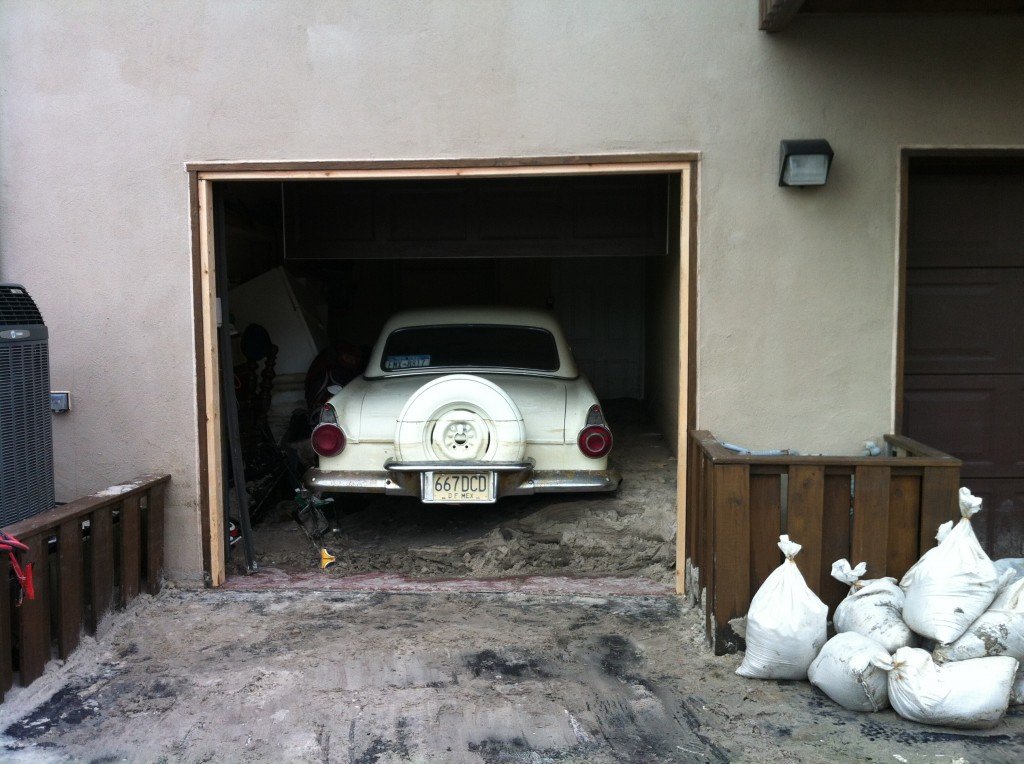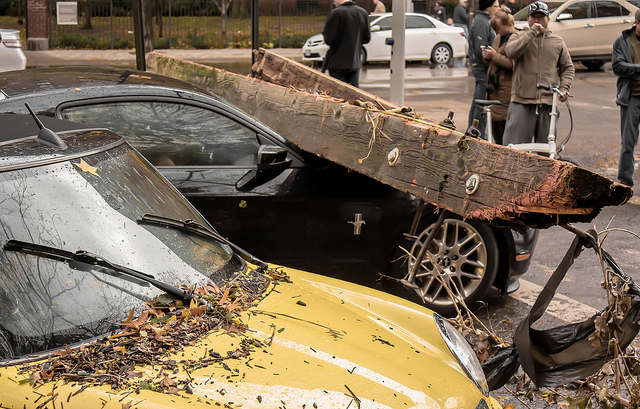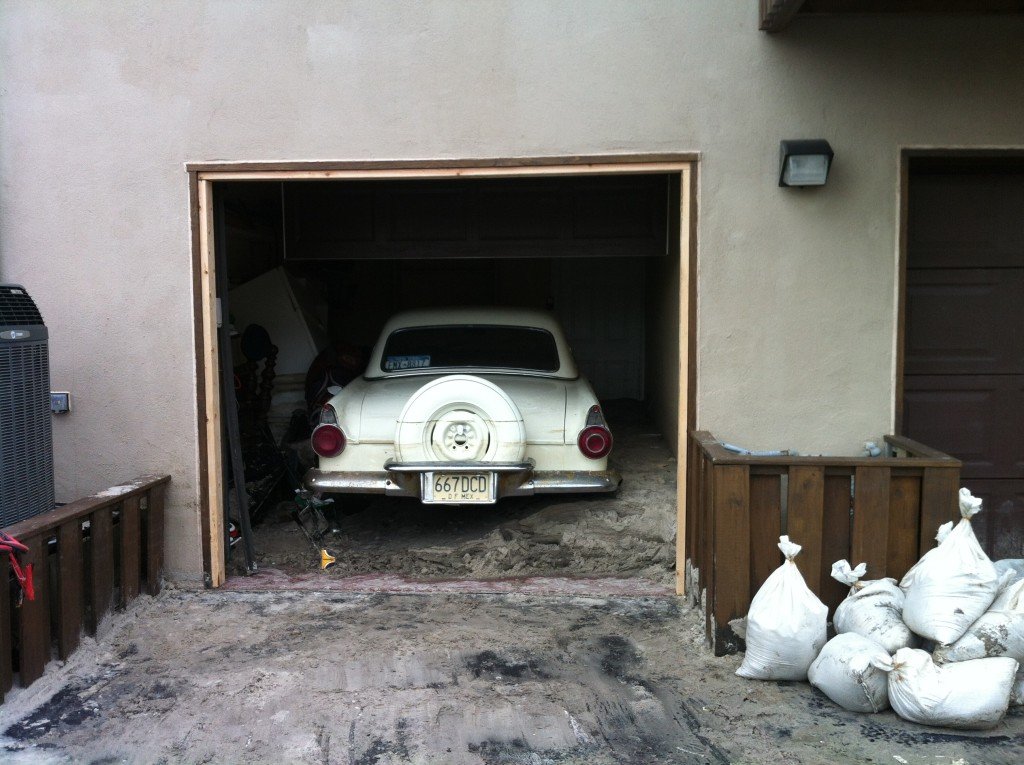Superstorm Sandy made landfall October 29, 2012, crossing the coast of New Jersey and creating damage in a widespread path up and down the East Coast.Sandy, a post-tropical cyclone, caused more damage (an estimated $18.8 billion) in the United States than all but two hurricanes (2005’s Hurricane Katrina at $48.7 billion and 1992’s Hurricane Andrew at $25.6 billion), according to the Insurance Information Institute.
The National Insurance Crime Bureau reported in February that Sandy led to damage to more than 250,000 vehicles. The good news is that insurers settled 93 percent of homeowners, auto and business claims (excluding flood) in New York and New Jersey in less than six months, said the I.I.I. Customers in 14 states and Washington, D.C. filed 1.5 million claims for Sandy-related damage to homes, vehicles, boats and businesses, with more than half of those filed in either New Jersey or New York.
But Sandy is still top of mind for tens of thousands of people on the East Coast. Families, towns and businesses continue to rebuild after significant damage.
Since the next hurricane season is upon us, it’s worth looking at six key takeaways learned from serving policyholders affected by Superstorm Sandy:
1) Be ready for whatever communication methods people want to use. With web tools and email, many might expect consumers to turn first to web tools in an emergency. That’s not so for Sandy claimants.
Nearly every one of the several hundred claims received by American Collectors Insurance came via telephone call. Web systems were of little interest.
That’s not too hard to guess, since nearly every claimant had significant damage to their homes as well as their collector vehicles—and there were power outages after the storm that lasted multiple weeks in New York and New Jersey that cut down the ability to use the Internet and electrical grid. Claimants would call whenever they could use a phone borrowed from family or friends.
For my firm, that meant ramping up in a hurry—with live, trained people ready to pick up the headset and take calls. With our headquarters in Cherry Hill, N.J. only 60 miles from the New Jersey shoreline town where the storm ended up landing, our employees were well aware of the storm’s daunting threats. In fact, staff was preparing our offices for possible flooding—after battening down the hatches at home—because the eye of the storm was on a path toward our location.
As the storm churned up the East Coast, employees outside of claims volunteered to make outreach calls and to work extra hours to assist in the claims process. Prior employee cross-training meant our staff was familiar with the mechanics of the claims process and we were able to multiply the usual processing staff by a factor of five on a day’s notice.
The storm was also a lesson in emergency preparedness, and our firm saw a number of agency partners who were ready with a plan to respond when something like a hurricane, tornado, earthquake, or wildfire hits. Job number one is to be able to answer the phones, even if the disaster hits the local area and impacts the agency.

2) Listen first.While the processing of claims was important, we found the most important and immediate need for nearly every claimant was the simple human need to be heard. To that end, management and staff spoke directly by phone or in person with every claimant.
Listening was job one. Our approach in the call center was no different than any other day—even as the call volume spiked—and that meant not putting time limits on telephone calls. With a devastating storm, everyone had a story and most of them were still unfolding.
Aside from their treasured collector vehicle or collection, policyholders often had devastating losses to their homes, vacation homes and daily driven automobiles. Even as they were calling, they were still in the midst of dealing with the aftermath: flooding, wind damage, downed trees, blocked roads, lack of power, fuel shortages, scattered debris and sewage, few retail stores open, and inaccessibility to television, radio, phone, and the web.
Everyone, to a person, wanted to tell the story about when, where and how the storm affected them and their home, vehicle, and town. Many simply needed to vent a little and appreciated having someone listen due to the shocking circumstances they were experiencing.
Hearing these calls dramatically brought home to me that it’s an important job in the insurance industry to give people an outlet to be heard and provide stability for them in a suddenly changed world. The feedback we heard from the claims process was that having a person listening to them helped tremendously in a stressful time.
3) People and teams rise to the occasion. All claims processing needs teamwork. In our case, that meant collaborating with the carriers American Collectors represents (members of Assurant Specialty Property).
While we followed the usual process, the unprecedented storm and its severe and widespread impact made this an unusual event. Our firm took the first reports of claims and made initial responses, while the carriers handled claims adjustment and payments. Our organizations collaborated to handle communication with policyholders.
An executive at a major stock exchange recently noted that Sandy showed that catastrophe planning can never foresee the timing and combination of elements that might happen in a disaster. He emphasized that the commitment and flexibility of a response team (both internal to an organization and outside of it) is what must make up the gap between a disaster plan and the actual needed response.
My company’s recovery plan—and the fact that our office avoided flooding and power outages—meant that we were able to stay open for business while other businesses just a few towns over were not as fortunate. Yet all of our employees were affected by the storm and saw the devastation firsthand.
Employees wanted to rally around the key task: Help customers any way we could. In addition to the business response and the rewards of helping customers, another element of teamwork I saw was our staff collecting and donating needed supplies for a nearby shelter.

4) The right coverage counts. Flood damage to vehicles is typically covered under the other-than-collision coverage (comprehensive) of standard auto insurance policies. The same is true in the collector-vehicle insurance market, with a key distinction: Claims on collector policies are settled at agreed value (full insured collector value) rather than actual cash value.
Unfortunately, many people insure their collector vehicles on a standard auto policy, which means in a total loss scenario they likely would receive actual cash value, which is significantly less in many cases. The agents/brokers who sold agreed-value policies were able to properly indemnify their clients. For claimants with agreed-value coverage, in fact, the collector vehicle might have been insured at a higher valuation than their daily-driver vehicle.
Almost all Sandy claims represented a total loss, and most flood damage claims were due to rising waters, a covered peril under the “other than collision” coverage on American Collectors policies.
5) Business partners matter. Any significant financial recovery to so many customers requires rapid and coordinated responses from business partners such as carriers, claim adjusters, local restoration shops, and agent partners.
In many cases, these same business partners in New Jersey and New York were grappling with the recoveries of their own homes and businesses at the same time they were supporting claimants.
Carrier representatives and claims adjusters worked immediately after the storm passed through the area, even as many cars were inaccessible due to wind and water damage, and most areas with claims had power outages lasting several days.
6) That special car is really important.In large part because the coverage amount is clear, 92 percent of Sandy claims were settled within 90 days after the storm with 100 percent overall closed. Of claims settled, four of 10 claimants decided to buy back their vehicles.
That means a significant percentage of collector-vehicle policyholders are using or will use claim proceeds to buy back their vehicles from salvage so they can jump back in to the hobby.
That indicates that, despite the significant dislocation in their lives, collectors have a strong attachment and passion for their vehicles and don’t want to give them up. The fact that so many collectors are choosing to spend time and money to restore their vehicles shows the resiliency and strength of the car hobby.
Even though our employees have always knew that our customers are sentimental and passionate about their cars, their reactions in the aftermath of Sandy really demonstrated it. Our call center managers expected that the collector car would be an ancillary thought for claimants affected by the storm, especially considering most of their backyards and parts of their houses were underwater. But they soon found out that these people were as concerned about their collector cars as they were about their houses. They were in fact just as devastated about those cars as they were about their homes.

Hurricanes, tornadoes, wildfires, nor’easters and other acts of nature take a huge toll in America. Superstorm Sandy won’t be the last devastating storm, unfortunately.
CoreLogic, a property information provider, estimated recently that more than 4.2 million homes along the U.S. Atlantic and Gulf coasts are located within storm-surge risk zones, totaling more than $1.1 trillion in property exposure. As natural disasters hit these communities in future years, the lessons of Superstorm Sandy certainly will help my company and hopefully others in the industry to help the people affected more readily and with compassion.
 Jill Bookman is CEO of American Collectors Insurance, which provides specialty insurance for collector vehicles and collectibles direct to consumers, through agents, and through company partners. Bookman can be reached at jill.b@AmericanCollectors.com.
Jill Bookman is CEO of American Collectors Insurance, which provides specialty insurance for collector vehicles and collectibles direct to consumers, through agents, and through company partners. Bookman can be reached at jill.b@AmericanCollectors.com.
Was this article valuable?
Here are more articles you may enjoy.


 Survey Shows Distracted Drivers Overconfident: 20% Text While Driving, 15% Use Social Media
Survey Shows Distracted Drivers Overconfident: 20% Text While Driving, 15% Use Social Media  FBI Says Cybercrime Costs Rose to at Least $16 Billion in 2024
FBI Says Cybercrime Costs Rose to at Least $16 Billion in 2024  Group Sues California Department of Insurance Over FAIR Plan Surcharges
Group Sues California Department of Insurance Over FAIR Plan Surcharges  FEMA Denies Washington State Disaster Relief From Bomb Cyclone, Governor Says
FEMA Denies Washington State Disaster Relief From Bomb Cyclone, Governor Says 